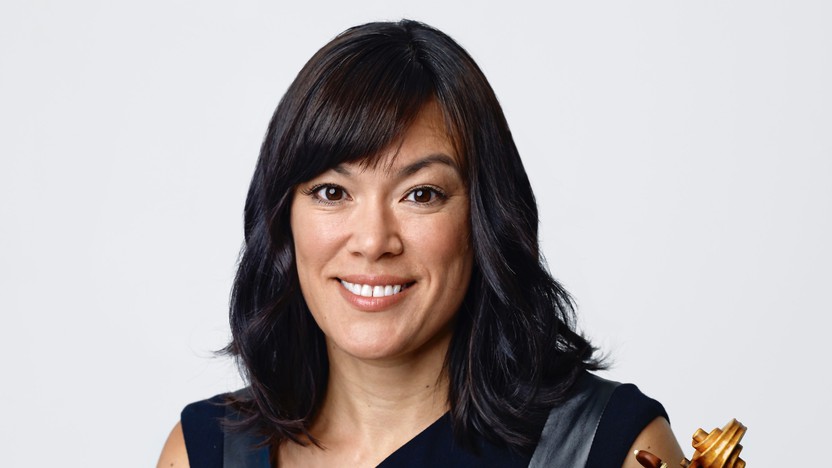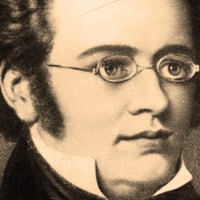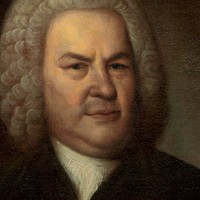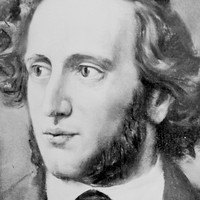Bach’s Double Violin Concerto

Sponsored By
- March 29, 2019

- March 30, 2019


Sponsored By



Among the many frustrations in Schubert’s tragically short career, none came close to the difficulties he encountered in the world of theater music, with sixteen failed operas in as many years. He had a habit of working with subpar librettos written by his friends; some scores he wisely abandoned midway, and others he brought to fruition only to see them fizzle. A last-minute invitation in 1823 to compose incidental music for the play Rosamunde might have helped opened doors for Schubert in Vienna’s theatrical circle, but the drama by Helmina von Chézy was a flop. The play closed, and Schubert’s music was lost for decades.
Schubert assembled nearly an hour of music for Rosamunde in a matter of weeks, pulling in some movements from existing works. When the incidental music failed, Schubert was at least able to reuse some of the new themes, as in the melody from Entr’acte III, which turned up in the String Quartet in A minor (D. 804), and in a Piano Impromptu in B-flat. This gentle Andantino movement is a perennial favorite among the suite of incidental music, with its elegant string theme in the outer sections and a contrasting episode featuring tuneful woodwind solos. The Ballet Music II features dance accompaniment in a marching gait that tumbles into a lively triplet pulse for a contrasting passage.
Aaron Grad ©2013

Johann Sebastian Bach probably composed his Concerto for Two Violins around 1730, not long after he agreed to lead Leipzig’s Collegium Musicum. This talented amateur group, founded in 1702 by a young Telemann, provided an outlet for Bach to play instrumental music in a sociable atmosphere, away from the weekly grind of his church duties. Many of the works that Bach brought to the Collegium were arrangements of works from an earlier period when he worked a secular job in Cöthen, so it is possible that the Double Violin Concerto had its origins in some earlier source material.
Along with Bach’s two extant Violin Concertos (also prepared for the Collegium), the Double Concerto borrows from a style popularized several decades earlier in northern Italy by Vivaldi and his contemporaries. Following the Vivaldi model, a ritornello structure in the first movement sets up a strong theme in the accompanying ensemble that makes its presence felt with every return. The added magic in this movement is the sophisticated counterpoint, drawing on the fugue techniques that Bach had advanced far beyond his Italian colleagues. Counterpoint is a crucial feature of the slow movement as well, with the two soloists weaving a patient fugue over an accompaniment that has just enough of a dancing lilt (and a tempo that Bach made sure to mark as “not too slow”) to propel the melodies forward. The contrapuntal technique of canon — with one voice following close after another in an echo effect — makes for a particularly vibrant finale.
Aaron Grad ©2022

Though Mozart remains Western music’s most celebrated wunderkind, his adolescent accomplishments are outclassed by those of Felix Mendelssohn, who must be acknowledged as classical music’s greatest child prodigy. No less a cultural authority than Goethe, on first hearing the eleven-year-old Mendelssohn play, remarked on his abilities, “such as I never believed possible in one of his age.”
“And yet,” noted Mendelssohn’s teacher Carl Friedrich Zelter, “you heard Mozart in his seventh year.”
Goethe: “Yes, I was myself just twelve, and like everybody else was immensely astonished at his extraordinary cleverness. But what this pupil of yours accomplishes bears the same relation to the little Mozart that the perfect speech of a grown man does to the prattle of a child.”
And to wit, today we spend little time with anything Mozart composed before the age of 20, whereas Mendelssohn’s Octet, composed at 16, and A Midsummer Night’s Dream Overture, completed one year later, are acknowledged masterpieces of the Romantic—and, indeed, of any—era.
The Symphony in C Minor (originally inscribed “XIII,” following the twelve Sinfonias for strings, but ultimately published as his Symphony No. 1) is a lesser-known document of Mendelssohn’s luminescent youth. It was completed on March 31, 1824, when Mendelssohn was only fifteen years old. If the work does not yet bear the distinct voice of his Italian and Scottish Symphonies, the C Minor nevertheless demonstrates the technical maturity on which those more fiercely original works would be built.
Mozart is the immediate model for this Symphony; the opening Allegro di molto, notwithstanding its timpani-and-brass-fueled Sturm und Drang, reflects the young Mendelssohn’s absorption of Mozart’s formal elegance. The specter of Bach, the composer whom Mendelssohn most revered, likewise haunts the Symphony, most clearly in the fugal passage in its finale. The second movement Andante, despite being the Symphony’s shortest movement, is arguably its finest, featuring a lyricism buoyed by deftly woven instrumental textures.
The Symphony No. 1 was first heard on November 14, 1824, at one of the Mendelssohn family’s private musicales, to celebrate Fanny Mendelssohn’s nineteenth birthday. Its public premiere was given in 1827 by the Leipzig Gewandhaus Orchestra. Mendelssohn later conducted a performance with the Royal Philharmonic Society in London on May 25, 1829, on which occasion he substituted an orchestral version of the Scherzo from his Opus 20 Octet for the third movement.
Patrick Castillo ©2015
Tickets for the performance at Humboldt High School are free for residents of Saint Paul’s West Side, as well as for kids, students and the families of West Side school students. Selections from Schubert’s Rosamunde will not be performed on March 28. As a part the March 28 concert, the second- and third-year musicians from Greater Twin Cities Youth Symphonies (GTCYS) Harmony program will showcase their violin skills by performing two pieces led by Barbara Flooding, Isabel Dammann and GTCYS student mentors.
Get driving directions and find nearby parking.
Find dining options close to the venue.
View seating charts to find out where you'll be seating.
Get driving directions and find nearby parking.
Find dining options close to the venue.
View seating charts to find out where you'll be seating.
